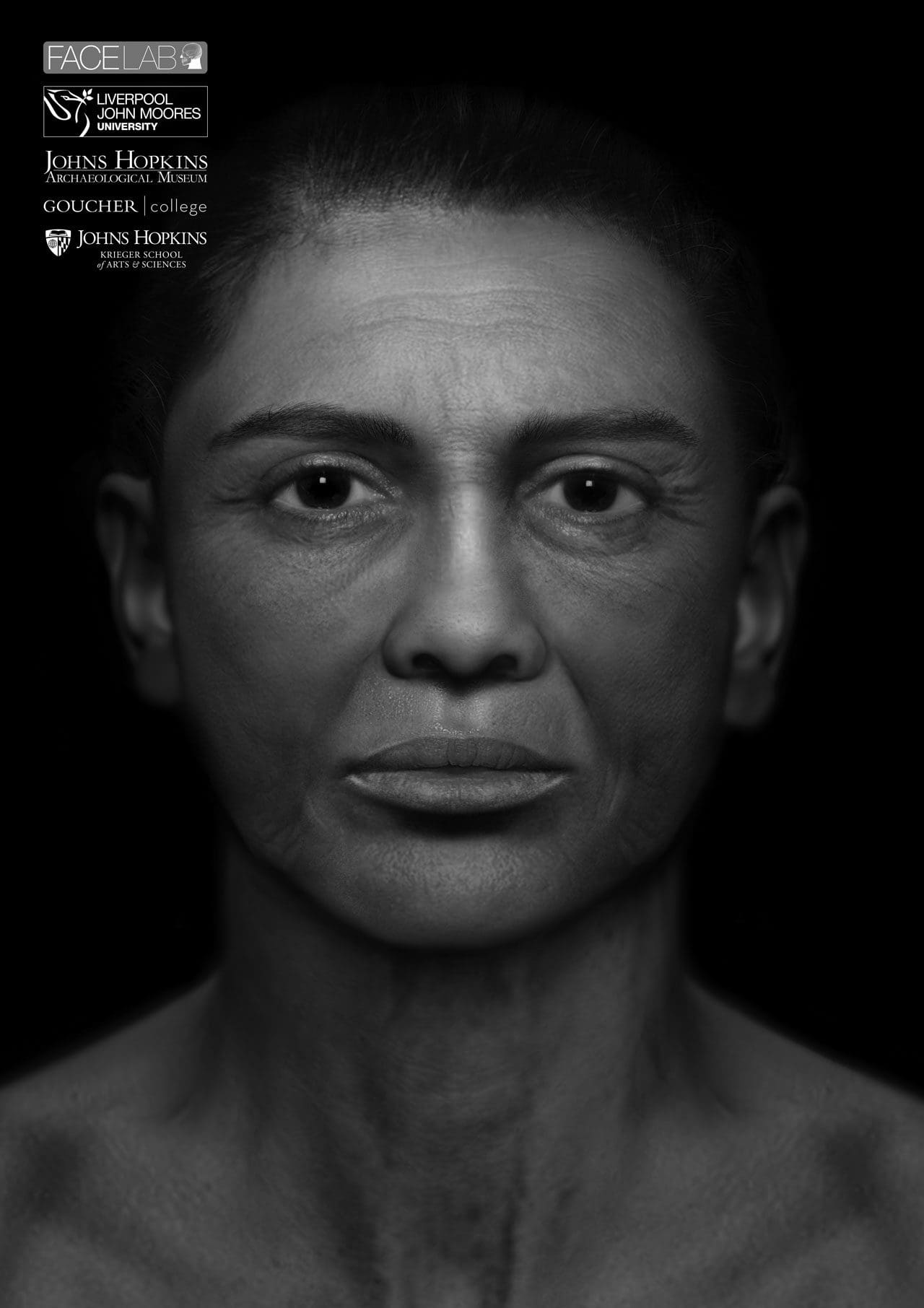Who Am I? Remembering the Dead Through Facial Reconstruction
The Goucher Mummy
By Meg Swaney and Sanchita Balachandran

This ancient Egyptian woman lived approximately 2400 years ago, and came to Baltimore in 1895. She is currently named the “Goucher mummy” because she was purchased in Egypt in 1895 by Dr. John Goucher, Methodist Reverend and educator, for exhibition at the Woman’s College of Baltimore. Newspaper reports document Goucher’s attempt to unwrap the mummified woman but the thick layers of resin used in her embalming made it difficult to remove her linen wrappings. Subsequent attempts to unwrap her have resulted in her current partially-exposed condition. After being exhibited at the Woman’s College (1895-1938), she was displayed at the Baltimore Museum of Art (1938-1971), and then returned to Goucher College, by which time her identity as an ancient woman had been lost. She has been on long-term loan to the Archaeological Museum since 1988, the same year initial CT work re-identified her as a woman.
Between 2016-2018, we undertook additional studies to clarify some of the findings of the 1988 imaging and to aid the creation of the facial depictions of this ancient woman. While these types of scientific techniques and the information gained from them are typically shared widely by many museums, we are currently considering what is appropriate or respectful to share. We will no longer be sharing images of the scientific imaging on our website as we make these determinations.
Computed tomography (CT) scanning revealed she may have undergone a period of malnutrition or illness when she was young and her bones were still developing, as there are growth arrest lines on her leg bones. As an adult, she stood approximately 5 feet 4 inches in height. Certain features of her skull indicate she is a female, and markers on her pelvis suggest she had at least two children. Several areas of her body feature strong muscle attachments, indicating she may have engaged in physical labor during her lifetime. Her teeth are in good condition, but show significant wear, which is common for ancient Egyptians whose food was often contaminated with sand. While there are no indications of her cause of death, she appears to have died when she was 45-50 years old, an average lifespan for an ancient Egyptian. CT scans also revealed information about her mummification: as was typical of this preservation process during this time period, her brain was extracted and discarded, and her organs were removed, embalmed, and then returned to her abdomen.
The facial depiction based on her bone structure gives a sense of what she may have looked like. As previously mentioned, we are currently evaluating this work to identify the most appropriate ways to share this information.